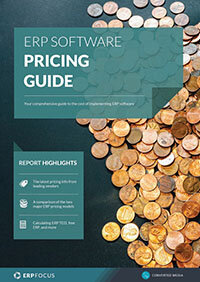ERP Training
Delivering training to ERP end users is a thankless task. An ambitious and energetic detailed effort must be made to identify everyone whose normal job will change as a result of an ERP implementation, to inventory the number of changes they will undergo, and to provide hands-on ERP training for each of those change topics. No matter how professional or how extensive your training program is, be prepared to hear the following after go-live:
1. “We didn’t receive enough ERP training”. This statement is made by the employee who is frustrated because she has just finished struggling with a once-a-year occurrence that was not, in fact, covered in training. Training classes are geared toward the 95% routine things that happen every day, not the 5% of exceptions that require some sort of special handling. However, that general statement throws a wet blanket over the entire training effort.
2. “We should have started training much earlier.” The inference here is that had ERP training begun earlier, more time could be spent practicing, or there might be time for one-on-one sessions with people who struggled with classroom training. It sounds logical, but there are two fallacies: (a) The earlier the training occurs relative to the ERP go-live date, the lower the retention (any training given more than six weeks before go-live is largely forgotten), and (b) in most cases, there is not sufficient master data and tested configuration to build a viable ERP training client more than six weeks in advance of go-live.
3. “I told my instructor I didn’t understand, but he just kept going.” Unfortunately, ERP training is conducted in a business setting, and as such, it has to be paced to avoid the point of diminishing returns. The hard fact is, some people aren’t going to understand ERP with normal instruction. An instructor has a responsibility to be as clear and concise as possible, and as patient as possible, but there does come a time when the rest of the class must move forward and the instructor should advise the student’s supervisor that there is an issue. The supervisor can assess whether one-on-one training can resolve the problem, or whether the student should be reassigned.
Medals Not Provided
If it sounds like end-user training is a no-win proposition, that’s because in one dimension – public relations -, it is a no-win. The people who are vocal about insufficient training post go-live are the ones receiving negative attention for making mistakes, having low productivity, or interpreting system information incorrectly. Those who are operating the ERP system well, and performing better than before attribute their success to their intelligence and experience, not to the ERP training they’ve received.
Don't Miss Research: Is Usability top of Your List?
An oft-repeated observation is that going to work on the first day after an ERP implementation is like going to work for a new company. If you can run your new company with essentially 100% of your employees on their first day at the job, and no significant business disruption, your training program has been wildly successful.
Free white paper

ERP Software Pricing Guide
Get the latest pricing information on over 80 popular ERP systems, and learn how to budget for your ERP project in our free guide

Featured white papers
-

ERP Implementation: 9 steps to success
The 9 proven steps you should follow when implementing ERP
Download -

ERP Implementation Checklist
Over 120 actionable steps to implementing a new ERP successfully
Download -

Manufacturing ERP Implementation Checklist
Over 70 actionable steps to rolling out new manufacturing ERP software
Download
Related articles
-

4 training tips for manufacturing ERP success
These four training tips will help your employees get the most out of your new manufacturing ERP ...
-

CMMC Compliance: What Aerospace and Defense Manufacturers Need to Know
Key insights on CMMC compliance, deadlines, and securing DoD contracts with CMMC 2.0 certificatio...
-

The case for multi-tier ERP implementations
Learn more about multi-tier ERP implementation and why you might need one

